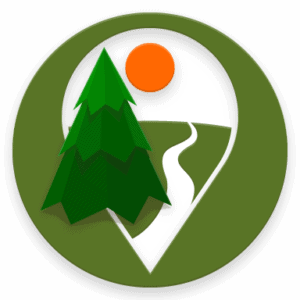Loppi, Edible plants in the hiking trail
Bilberry (Vaccinium myrtillus)
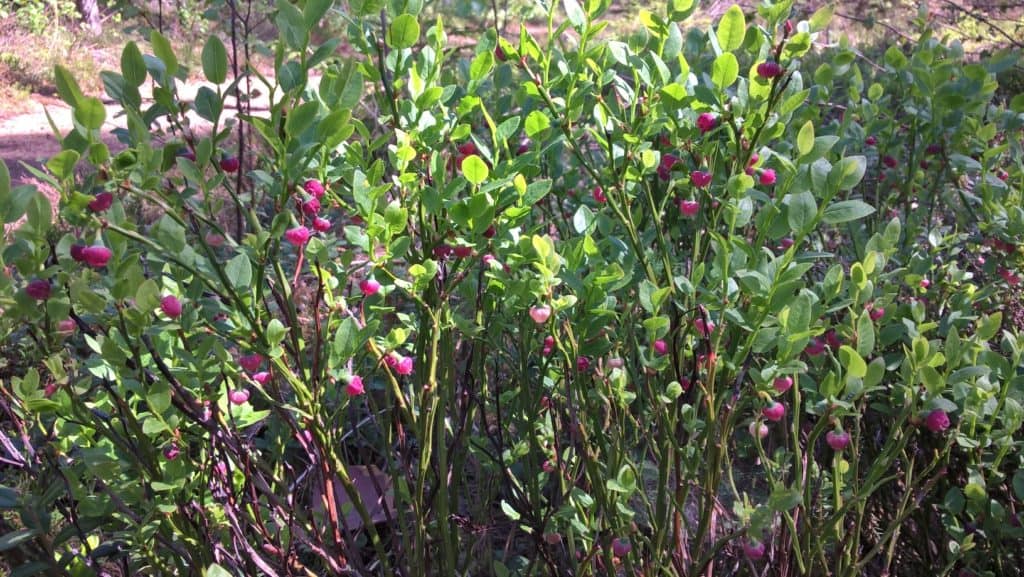
Bilberry (sometimes called the European blueberry) occurs widely by the trails in Loppi. Bilberry is one of the most common plants in Finnish forests, and it thrives even in the mountainous areas of Northern Finland. Bilberry is a low shrub which drops its leaves in autumn. Bilberry flowers early in the summer in southern Finland, and a bit later in the north. Frosty nights in June are a threat to the berry, as they can destroy its flowers. Bilberry berries and leaves can be used for different purposes. The leaves can be used as an ingredient in a herbal drink, or in a salad as such. The leaves are collected in mid-summer by tearing them off manually, preferably from an area with minimal berry production. If the leaves are collected by using a tool, such as a scythe, permission from the landowner is required. Berries mature in late summer and can be picked until the beginning of September. Bilberry can be stored by freezing or drying. Bilberry is a versatile berry and can be used from baking to desserts. It can also be juiced and used as a smoothie ingredient.
Considerations for use: Bilberry leaves contain oxalic acid, and are not suitable for long-term use or for people suffering from renal conditions.
Bog bilberry (Vaccinium uliginosum)
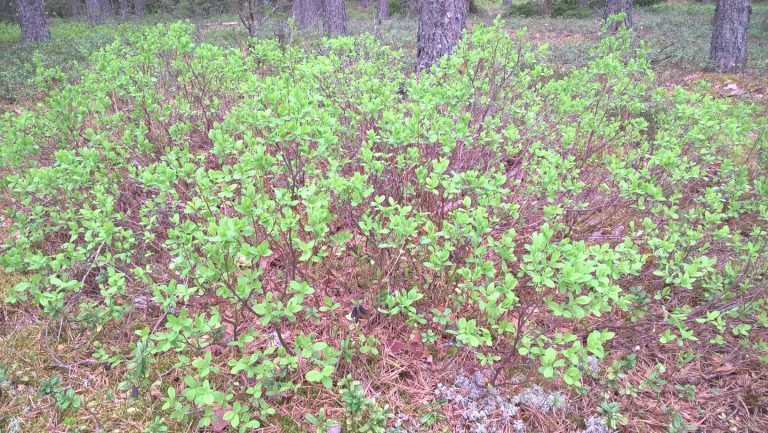
Bog bilberry occurs widely along the Lake Iso-Melkutin trail. Bog bilberry is a low shrub common in the entire country, including the hilly areas of Northern Finland. The leaves of bog bilberry have a beautiful autumn colouring. Bog bilberry flowers in May / June, and slightly later in the north. Bog bilberry resembles bilberry in appearance, but it has a wooden stem. The berries are blue just like bilberries, but bigger in size. Bog bilberry has a mild and slightly watery flavour. It is more tedious to pick bog bilberries than bilberries, as the berries grow far apart along the branches. Bog bilberries can be used for juices and jams together with bilberries or blackcurrants. Bog bilberry has been used very little in Finland. There are different beliefs about bog bilberry, according to which the berries cause headaches, but there is no scientific evidence to support the claim.
Lingonberry (Vaccinium vitis-idaea)
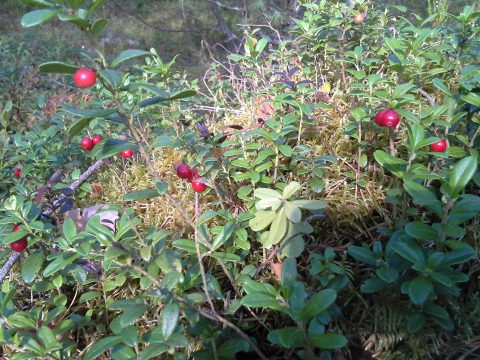
Lingonberry occurs widely along the trails in Loppi. Lingonberry is a low shrub common throughout the country. The underside of lingonberry’s evergreen leaves is speckled. The flowering takes place in mid-summer, which ensures a more secure crop than the slightly earlier flowering bilberry. Lingonberry contains benzoic acid, which makes it easy to preserve. The berries are easy to pick. Lingonberry is a versatile berry, ideal for baking and cooking, as well as a site dish made into a mash or as such. You can also make lingonberry juice.
Bearberry (Arctostaphylos uva-ursi) resembles lingonberry, and grows widely on the shores of Lake Iso-Melkutin. Bearberry is a herbal plant. Its leaves are used in food supplements. Bearberry flowers earlier than lingonberry. The underside of a bearberry leaf is veined. The berries are red like lingonberries. Bearberries are flavourless, and they are not used in cooking.
Spruce (Picea abies)
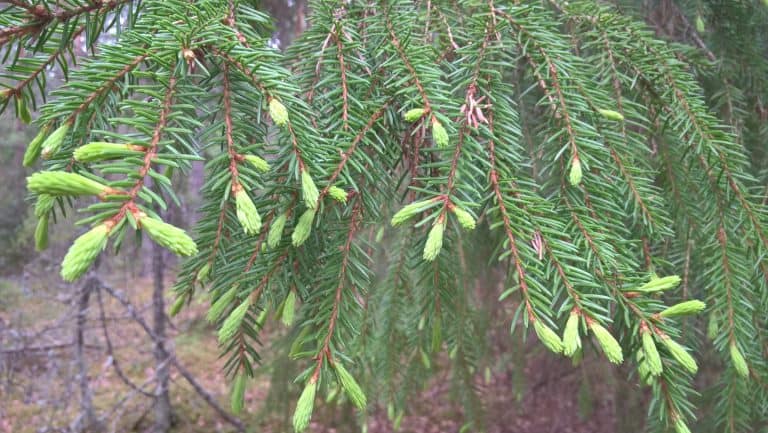
The terrain surrounding the trails in Loppi consists mostly of pine-dominated heath forests, but also spruce grows in places. Spruce is very common in Finland, with the exception of the northernmost Lapland. Spruce’s new growth is suitable for human consumption. It stands out as light green growth at the tips of spruce branches in late spring and early summer. The new growth is collected before it hardens, when it is approximately 2-4 cm long. Spruce’s new growth cannot be collected without the landowner’s permission. The new growth can be used fresh as such, or it can be stored by freezing. The new growth can be used as a spice in soups and stews. It can also be made into syrup or jam, or infused into a drink.
Considerations for use: Spruce may cause allergic symptoms. The needles of coniferous trees contain chemicals, which can be harmful if consumed in large quantities.
The mountain-ash (Sorbus)
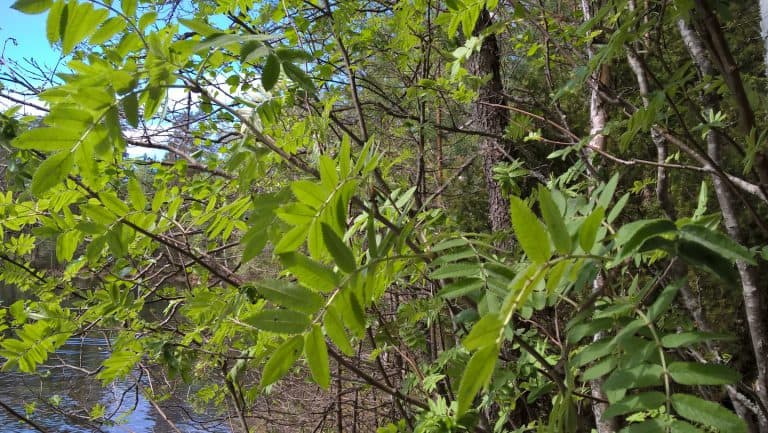
Mountain-ash grows in the north bank of Lake Iso-Melkutin. Mountain-ash is common in the whole country except for Northern Lapland. Mountain-ash’s young buds, young leaves and berries can be used for various purposes. Berries can be picked, but the landowner’s permission is required for collecting buds and leaves. Buds are picked early in the spring, leaves before the flowering in May–June, and berries after they have ripened in the autumn. Buds and leaves can be stored by drying. Leaves can also be fermented to create a herbal drink. Berries are preserved by freezing or drying. Dried and milled berries can be used, for example, in cakes and bread. Fresh mountain-ash berries are an ideal ingredient for jam, marmalade, jelly, chutney and sweets. The acidity can be reduced by freezing or by collecting the berries only after the first frosty nights.
Considerations for use: Do not collect leaves damaged by leaf rust or insects.
Juniper (Juniperus communis)
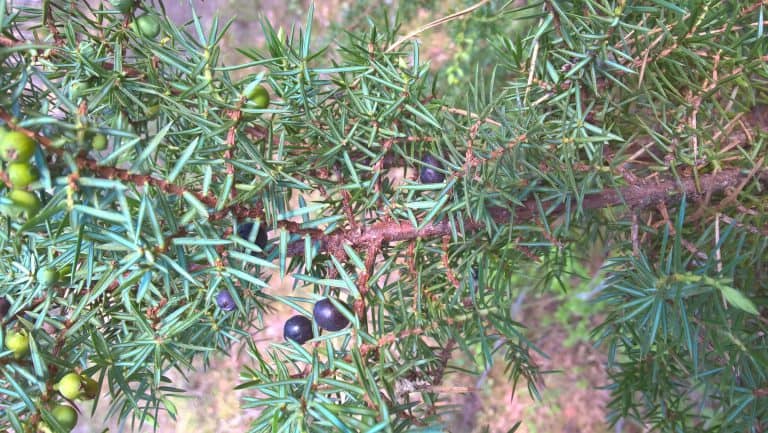
Juniper grows widely along the Loppi trails. Juniper is common in the entire country. Juniper shoots and berries can be used for various purposes. Landowner’s permission is required for picking juniper shoots, but berries can be picked freely. Shoots are collected in early summer, and berries from the end of the summer until late autumn. The juniper berry, that is, the seed cone, is initially green and turns blue as it matures. Berries and shoots are dried for use.
Juniper berries are ideal for adding flavour to game and alcoholic beverages, such as the Finnish home-brew sahti, and spirits. You can use juniper branches in smoking fish.
Considerations for use: Juniper is not suitable for pregnant women or people suffering from kidney illnesses. The needles of coniferous trees contain chemicals, which can be harmful if consumed in large quantities. Juniper berries are recommended for use only a few at a time.
Stone bramble (Rubus saxatilis)
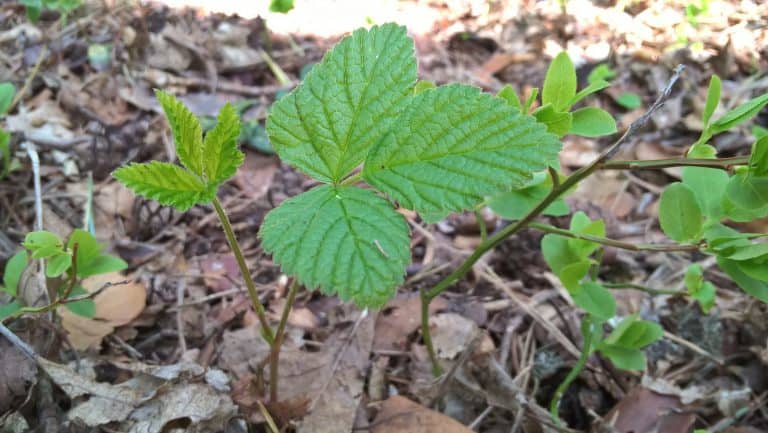
Stone bramble grows on the northern bank of Lake Iso-Melkutin. Stone bramble is common in the whole country. Stone bramble is a low-growing perennial that sends out long runners reaching the length of various metres. The leaves are shaped like raspberry leaves. Stone bramble berries are bright red and have a sour flavour. The berry is a drupe with large, hard seeds. Stone bramble’s leaves and berries can be used in various ways. Dried or fermented leaves can be used in herbal drinks. The best time for collecting stone bramble leaves is in the early summer before flowering. The berries are not very sweet, but they can be used in, for example, jelly.
Meadowsweet (Filipendula ulmaria)
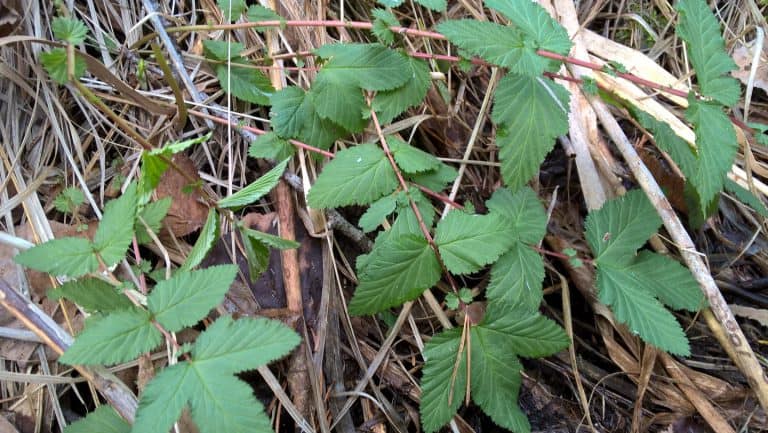
Meadowsweet thrives by the water, in ditches, damp meadows, and field banks. In the Lake Iso-Melkutin area, it can be found in small quantities on the shores of Lake Yli-Mylly and the gulf of Purinlahti. Meadowsweet is a common perennial throughout the country. Meadowsweet leaves and flowers can be used for various purposes. Leaves are collected before flowering, and flowers immediately after they have opened. Meadowsweet grows a lush flower with a strong odour in the middle of the summer. Leaves and flowers can be preserved by drying. Meadowsweet flowers can be used in herbal tea. Flowers can also be used to add flavour to other drinks or even ice cream. Dried leaves are ideal for herbal tea, and fresh leaves can be used as such in salads or vegetarian food.
Considerations for use: Meadowseet contains salicins, and may cause nausea or allergic reactions.
Rosebay willowherb (Epilobium angustifolium)
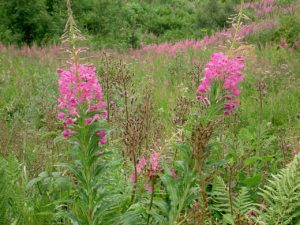
Rosebay willowherb thrives on road banks, where it can be found along the Loppi trails, too. The plant quickly takes over gaps caused by felling of trees in areas with a lush terrain. Rosebay willowherb is common in the whole country. The plant’s abundant flower makes it is easily identifiable. Almost the entire plant can be used: the leaves, shoots and flowers. In early spring, young shoots can be used in a similar way to asparagus. They are at their best when 10–20 cm in height. Older shoots turn hard and chewy. Steam the shoots and eat them with melted butter. The shoots keep in the fridge for approximately one week. You can use the leaves in a salad as such. Try them also in omelettes or gratins. Leaves are collected before flowering in June–July. Dried flowers and leaves are ideal in a herbal drink. Place fresh blooms of rosebay willowherb in a water jug to provide flavour, or use them as decoration in ice cubes.
Raspberry (Rubus idaeus)
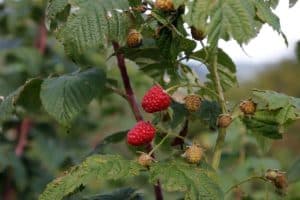
Raspberry is common in Southern and Central Finland, but becomes less common when heading towards the north. Raspberry is one of the most high-yielding wild berries in Southern Finland. Raspberry thrives in sunny locations, clean-felled areas and by the roadside. Raspberry spreads by its roots. The canes produce berries in their second year. In the first year, raspberry canes have soft thorns and are green in colour, and in the second year, they become wooden and have hard thorns. Both berries and leaves can be used for different purposes. Berries mature in July–August. They are tasty as such, in desserts and cakes. Raspberries can also be used in juice and jam. Berries can be dried or preserved by freezing. Leaves can be collected from both first and second year canes. Fermented leaves are a tasty ingredient in a herbal drink.


